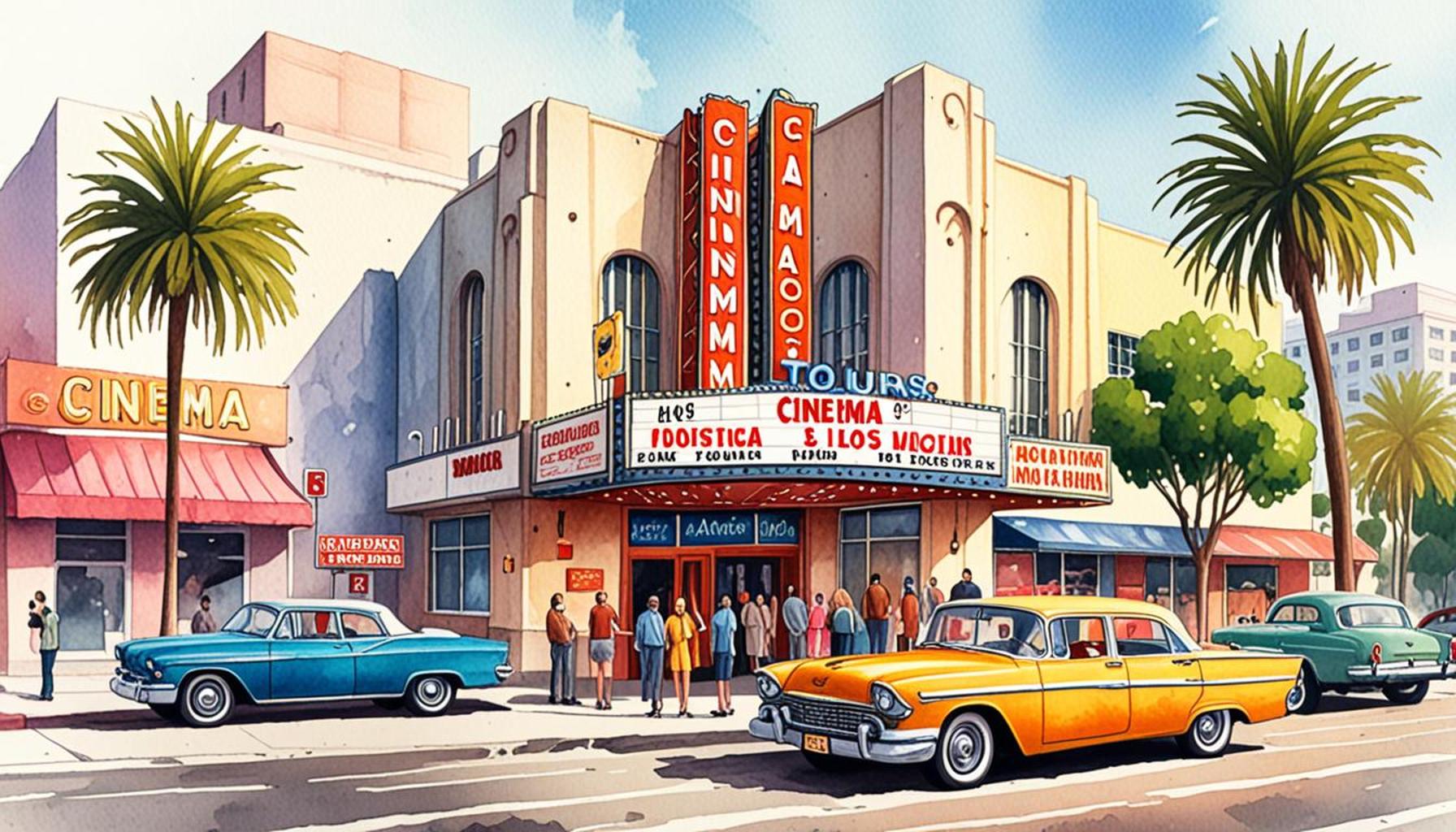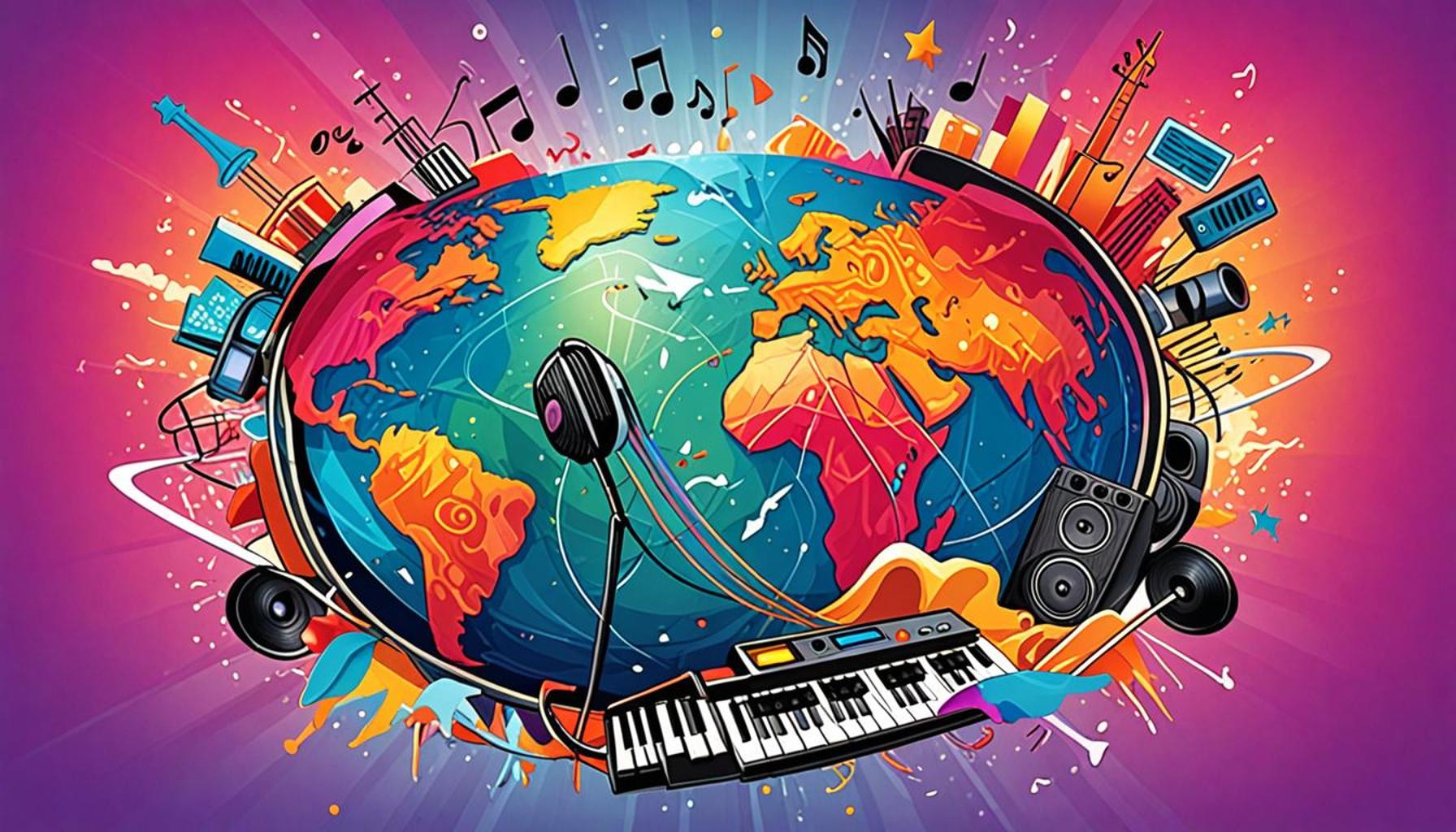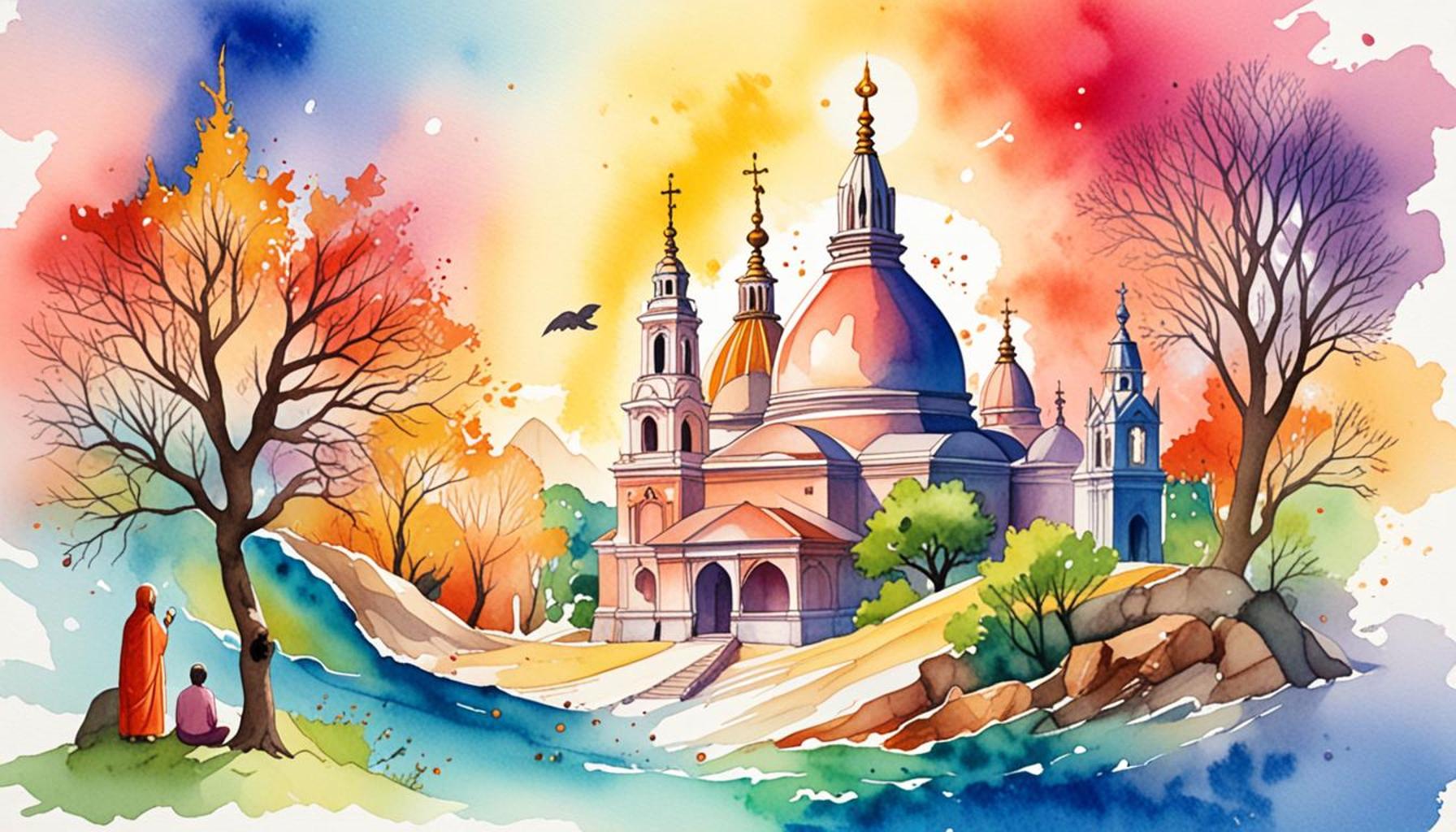Street Art Itineraries: Exploring Urban Culture in American Cities
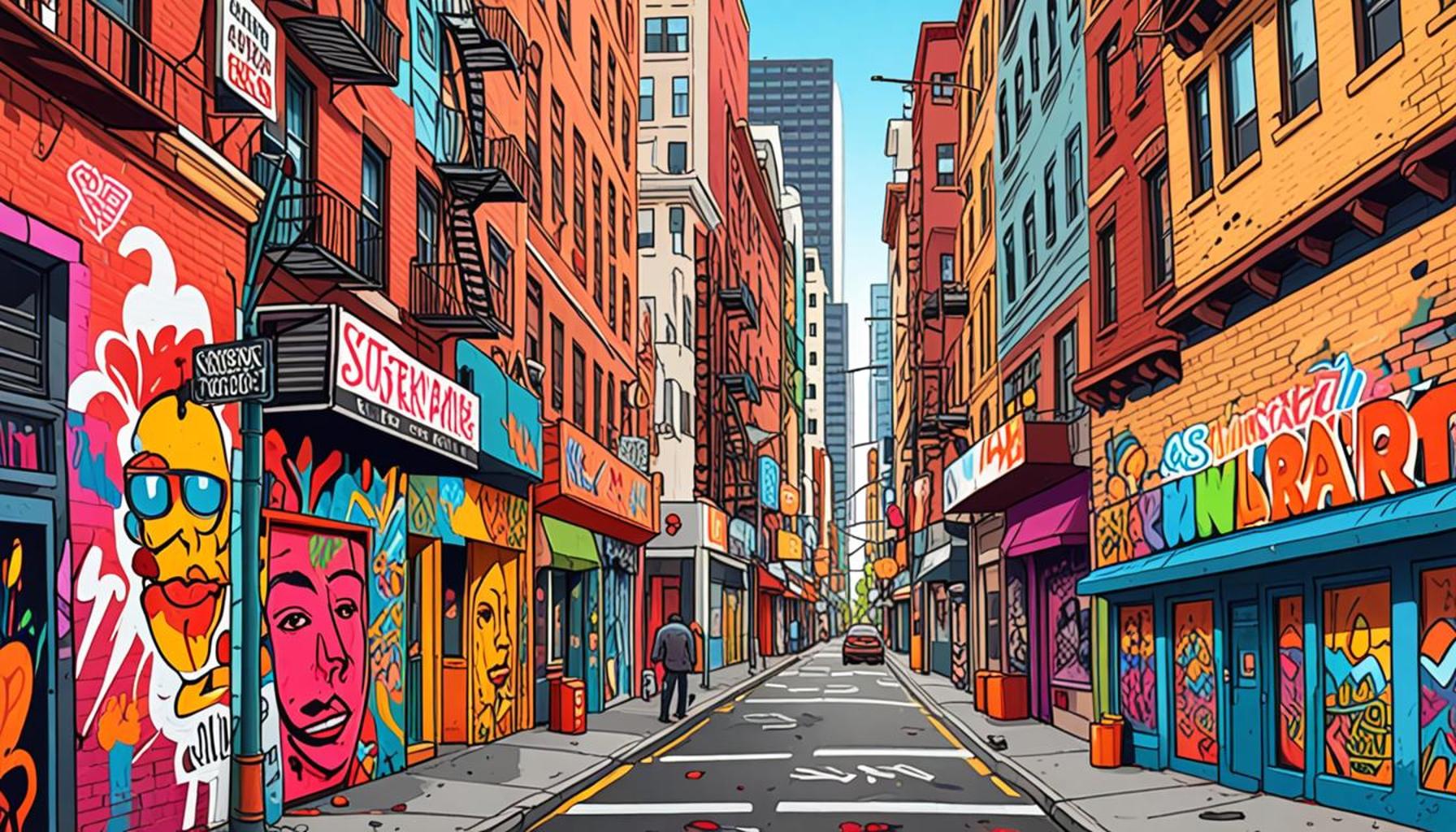
Unveiling the Canvas of Urban Stories
Street art is not just decoration; it’s a vivid expression of urban culture. This dynamic form of artistic expression reflects the history, struggles, and triumphs of communities across America. Cities like New York, Los Angeles, and Miami are transforming urban spaces into open-air museums where art tells stories. These cities serve as a canvas where local artists can communicate messages and emotions that resonate with their communities.
As you traverse these vibrant areas, you’ll discover:
- Murals that capture the essence of local culture, often depicting historical events, cultural icons, or community heroes. For instance, Philadelphia is famed for its murals, with the Mural Arts Program showcasing over 3,600 artworks that narrate the city’s rich history.
- Graffiti that speaks to social issues and inspires dialogue. In places like Los Angeles, street artists like Banksy have used the medium to comment on topics such as homelessness and environmental concerns, creating a platform for social commentary accessible to all.
- Installations that challenge the viewer’s perceptions, pushing boundaries and altering the urban environment. In New York, works like “The Great Wall of Los Angeles” use significant public spaces to engage with the viewer on a deeper level, often incorporating narrative storytelling through visuals.
Creating your own street art itinerary allows you to explore the unique narratives embedded in the urban landscape. Each piece of art offers a glimpse into the lives and thoughts of the people who inhabit these cities. A weekend spent wandering neighborhoods like Wynwood in Miami or Bushwick in Brooklyn opens one’s eyes to an array of artistic visions that reflect both the struggles and the celebrations of urban life. From colorful murals celebrating diversity to poignant works addressing systemic injustice, street art is a lens into the soul of the city.
Why Explore Street Art?
Street art pulls you into the heart of American cities. It breaks the barriers of traditional galleries and invites you to witness creativity in its rawest form. Unlike artworks housed behind glass in formal settings, street art is accessible and fleeting; it can change overnight, with new pieces emerging to reflect the latest social movements or community sentiments. By exploring these itineraries, you engage with artists, uncover hidden gems, and learn about the rich tapestry of urban life.
Moreover, street art often serves as a callback to the cultural heritage of the areas, bridging gaps between generations. Participating in guided street art tours or using apps that highlight various locations can enhance this experience. Whether you’re an art enthusiast eager to dive deep into the latest trends or simply curious about the surroundings, the journey through these street art scenes is boundless, revealing an ever-evolving narrative woven into the fabric of urban existence.
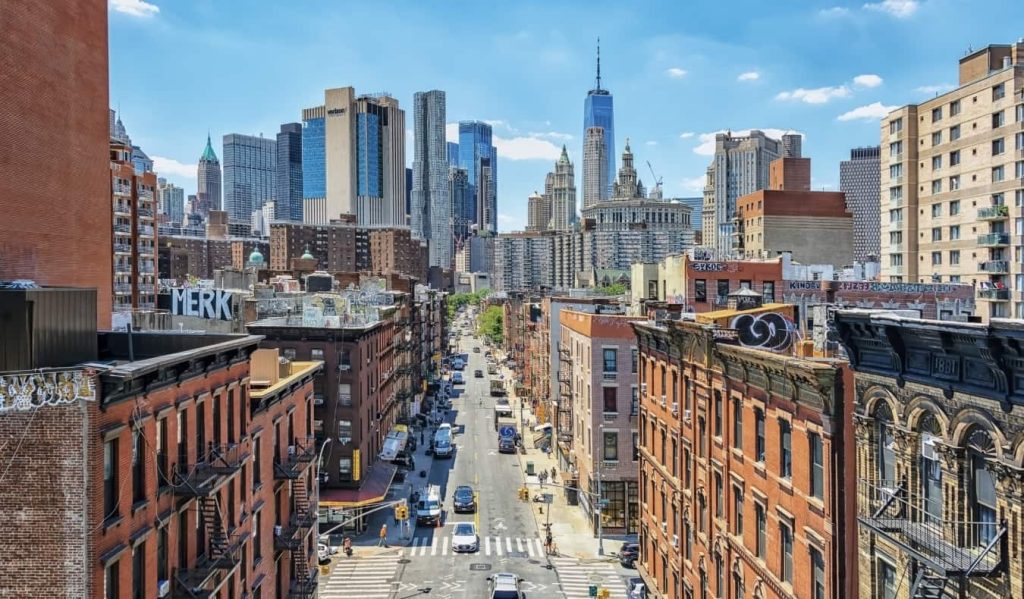
DISCOVER MORE: Click here for thrilling weekend getaways
Street Art: A Pulse on Urban Life
As you embark on a journey through America’s dynamic urban landscapes, street art emerges as a compelling storyteller, capturing the essence of each city’s unique identity. The vitality of street art not only reflects the artistic expressions of its creators but also delivers social commentary and cultural reflections that resonate deeply with the inhabitants of these urban jungles. Cities like New York, San Francisco, and Austin boast rich street art scenes that are integral to understanding the multifaceted layers of urban culture.
While wandering through neighborhoods renowned for their street art, such as the Mission District in San Francisco or East Nashville in Tennessee, you can witness a tapestry of creativity woven into the very fabric of the city. Each mural, each piece of graffiti, and each installation contributes to a narrative that is constantly evolving. Here are a few notable aspects of street art to consider:
- Cultural Significance: Street art often serves as a reflection of the community’s cultural diversity. In cities like Chicago, the vibrancy of neighborhoods such as Pilsen showcases murals that celebrate the rich heritage of the Latino community. These artworks not only beautify the streets but also empower local voices and preserve cultural stories.
- Social Commentary: Artists frequently use street art as a platform to address pressing social issues. For example, in Washington, D.C., murals addressing topics like racial equality and political activism have emerged as pillars of community dialogue, inviting discussions that bridge gaps between various socio-political viewpoints.
- Collaboration and Community Engagement: Many cities have fostered local initiatives that encourage collaboration between artists and community members. Programs such as New Orleans’ “Arts Council” initiatives promote public art projects that reflect community values, creating a sense of ownership among residents while fostering greater engagement with the arts.
The experience of exploring street art is enhanced through community-led bus or bike tours, where guides share the stories behind each piece, revealing the artist’s motivations and the historical context that inspired their work. Apps and websites that map out street art locations can also facilitate this exploration, giving art enthusiasts and casual wanderers alike a structured path through the city’s artistic realm.
Connecting Through Art: A Living Gallery
Street art does not merely exist as a visual feast; it is a catalyst for connection. When you pause to take in a mural, you may find yourself reflecting on the emotions and narratives of the artist’s intent, thereby forming a deeper connection with the community around you. For travelers and locals alike, engaging with street art helps uncover a city’s hidden character, fostering an appreciation of both historical struggles and future aspirations. The vibrant urban canvas tells stories that go beyond paint on a wall—each stroke is a piece of someone’s reality, inviting you to listen and engage.
Exploring these street art itineraries is an enlightening experience, offering insight into the culture and spirit of American cities. The diverse and transformative nature of street art keeps the urban core alive, invigorating communities and fostering a sense of belonging among residents and visitors alike.
Street art has become a defining aspect of urban culture, reflecting the diverse voices and creativity found in American cities. As we delve into the dynamics of these vibrant creations, one must understand the significance of these itineraries that guide art enthusiasts through bustling urban landscapes. These itineraries not only lead to awe-inspiring murals but also facilitate a deeper connection to the cultural and social narratives that surround these works of art.
American cities such as New York, Los Angeles, and Miami serve as hubs for street art, attracting both local artists and global talents. The excitement of discovering hidden gems around every corner combined with guided tours offers a unique perspective on each city’s identity. Visitors are privy to stories of various communities, often highlighting themes of resistance, activism, and identity.
Moreover, engaging with street art illuminates the broader social issues faced by urban communities, creating an intersection between art and civic engagement. Artists use their platforms to express sentiments on identity, inequality, and the environment, ultimately inviting viewers to participate in a dialogue. This transformative search for art and culture can lead to newfound appreciation and understandings of urban diversity.
In exploring these street art itineraries, one may also encounter the economic benefits derived from art tourism. Cities promoting these routes often experience a boost in local economies through increased foot traffic and tourism-related spending. Additionally, local businesses benefit from the increased visibility and patronage that comes with being part of renowned art trails.
As we navigate through the exciting realm of street art itineraries, it becomes clear that they are more than just paths to admire visually stunning works. They represent a vibrant tapestry of American urban life, urging both locals and visitors to explore, engage, and reflect on the stories embedded within the heart of the city.
| Category | Details |
|---|---|
| Cultural Significance | Street art expresses community voices and social issues. |
| Economic Impact | Art tourism generates revenue and supports local businesses. |
DIVE DEEPER: Click here to discover unforgettable musical journeys
Uncovering The Stories Behind The Art
Street art itineraries provide an engaging pathway to uncover the hidden narratives associated with urban environments. Many American cities have begun to capitalize on this vibrant cultural phenomenon, offering tours and guides that delve deeper into the stories behind the spray paint and stencils. In cities like Los Angeles, historic neighborhoods such as Downtown and the Arts District showcase an array of murals that call attention to the area’s rich history and cultural evolution. The narratives conveyed through these artworks often reflect themes of resilience, identity, and social change concerning the artists’ backgrounds and the neighborhoods where they work.
For instance, Los Angeles’s Arts District is a prime example wherein the connection between art, community, and commerce can be explicitly delineated. As businesses and galleries emerged from old warehouses, artists utilized buildings as canvases, turning the streets into an ever-changing gallery. This neighborhood is home to iconic murals by artists like Shepard Fairey and RETNA, both of whom convey messages of social justice and cultural pride through their work. The constant transformation of these spaces keeps the dialogue open, reminding us that urban art is not merely static; it is a dynamic conversation between the past, present, and future.
Exploring Methodologies and Techniques
Another fascinating aspect of street art is the array of techniques and methodologies employed by artists to express their ideas. Techniques vary from traditional spray paint to intricate stencil work, mosaic patterns, and even 3D installations. In Philadelphia, known for its prolific mural scene, the famous Mural Arts Program hosts workshops where locals can learn from established artists, bridging cultural gaps and encouraging emerging talent. This program not only fosters artistic skill but also emphasizes the importance of collaboration and community participation. The essence of mural-making is that it often involves team efforts, where various artists come together to create larger work that resonates with the community.
Beyond the visual impact lies the technological component, with digital media becoming increasingly integrated into street art. Some artists enhance their pieces by incorporating augmented reality elements, creating interactive experiences for viewers. This innovation adds another layer to the storytelling process, allowing observers to engage with the art in a new and exciting way. Events like the “Projection Mapping” in major cities integrate digital light art into street culture, transforming walls into storytelling platforms that further invite audiences to interact.
The Global Connection
As the street art phenomenon has gained global traction, American cities have increasingly embraced international styles and perspectives. Artists from diverse backgrounds infuse their unique cultural influences into their work—whether it’s Murales de México in Phoenix or French-inspired art in New Orleans. This global connection nurtures cross-cultural dialogues, as street art serves as an international language that transcends barriers. By exploring American cities, one often discovers the global narratives embedded in local communities, showcasing how art transforms and shapes urban identities.
Moreover, the rise of social media platforms has transformed the dissemination of street art, propelling artists to prominence beyond their local scenes. Online shareability allows for broader audience engagement, creating movements that reverberate globally. The use of hashtags brings attention to social issues and unites creators under common themes, sparking dialogues across continents. As street art continues to flourish in public spaces, the intricate tapestry of urban culture keeps evolving, inviting exploration from enthusiasts and casual observers alike.
DISCOVER MORE: Click here to uncover local festival adventures
Final Thoughts on Street Art Itineraries
As we navigate the streets of American cities, it becomes apparent that street art is more than mere decoration; it is a vibrant reflection of urban culture, community identity, and social dialogue. Street art itineraries serve as vital conduits for exploring these multifaceted narratives, allowing us to engage with the profound stories woven into the fabric of our cities. From the dynamic murals of Los Angeles’s Arts District to Philadelphia’s collaborative Mural Arts Program, each location offers a unique glimpse into how local histories and contemporary issues shape artistic expression.
The methodologies and techniques adopted by street artists create a rich tapestry that invites ongoing interaction and collaboration. As urban spaces evolve, the messages conveyed through their artwork continue to resonate, prompting reflections on social justice, cultural pride, and community resilience. Furthermore, the integration of technology, such as augmented reality and digital mapping, adds an innovative layer to the street art experience, making it more accessible and engaging for diverse audiences.
Ultimately, street art itineraries represent an opportunity to step beyond conventional tourism and immerse ourselves in the local culture of the cities we visit. They encourage us to appreciate the global influences that enrich American street art, fostering a greater understanding of how art crosses borders and nurtures dialogue amongst cultures. As you embark on your exploration of urban art, remember that every mural tells a story—one that is continuously unfolding and waiting for your discovery.

